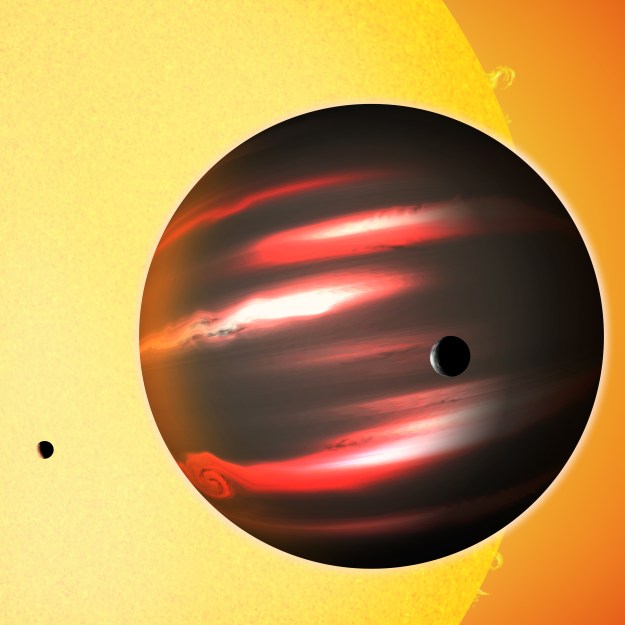
Astronomers have recently discovered the darkest exoplanet ever. Called TrES-2b, it’s a Jupiter-sized gas planet that has an ambient temperature of around 1,800 thanks to its orbiting just three million miles away from its star. More intriguingly, the planet reflects nearly zero light.
Excuse us for channeling Nigel Tufnel, but “It’s like, how much more black could this be? And the answer is none. None more black.”
According to researchers at the Harvard-Smithsonian Center for Astrophysics, TrES-2b reflects less than a single percent of the light falling on it, making it literally blacker than coal.
“TrES-2b is considerably less reflective than black acrylic paint, so it’s truly an alien world,” astronomer David Kipping, lead author of the research, said in a release.
“It’s not clear what is responsible for making this planet so extraordinarily dark,” co-author David Spiegel said. “However, it’s not completely pitch black. It’s so hot that it emits a faint red glow, much like a burning ember or the coils on an electric stove.”
It seems the planet’s unfathomable levels of heat are a partial cause of its unwavering blackness. As compared to Jupiter, its closest analog in our solar system, TrES-2b has a much different makeup. Jupiter reflects more than a third of the light that hits it thanks to its blanket of ammonia clouds.
TrES-2b is far too hot for shiny clouds. Rather, its atmosphere is made of light-absorbing chemical like sodium, potassium and titanium oxide that make the planet’s little reflected light tinged red. Yet, as the researchers admit, that’s only part of the darkness equation.
“It’s not clear what is responsible for making this planet so extraordinarily dark,” co-author David Spiegel said. “However, it’s not completely pitch black. It’s so hot that it emits a faint red glow, much like a burning ember or the coils on an electric stove.”
The discovery was made using data from NASA’s Kepler spacecraft. Kepler’s main mission is to search for Earth-like planets, and as such is equipped to detect stars’ brightnesses with extreme precision. Kepler was able to detect subtle fluctuations in the planet’s reflectivity, which suggests it changes phase in a similar fashion to our moon. At the same time, the infinitesimal changes helped show that the planet simply doesn’t reflect much light to begin with.
Photo: David A. Aguilar (CfA)


